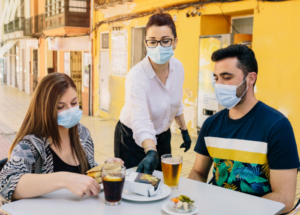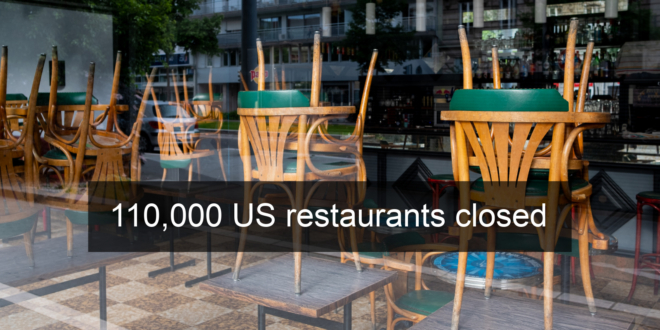By Jeff Domansky, Dec 9, 2020
Like many other businesses, the restaurant industry is struggling for its life, and new research shows the fragile, slow recovery through October has now slipped backward in November.

Pay-at-the-table technology firm TableSafe’s research data shows restaurant transaction volumes declined to 50% of pre-pandemic levels in November after recovering to 60% of pre-pandemic levels in October.
“Through October, we saw encouraging signs of transaction growth, but this all reversed in November as the weather turned colder and new restrictions were enforced,” said Gordon Gardiner, TableSafe’s CEO. “Despite actually having more installations in November in our network of restaurants, transaction volumes declined for the first time since April. The fact that we see sustained volumes at all with many states closed is testament to the ingenuity and grit of restaurant operators.”
Government funds needed now
US Congress has failed to provide a new stimulus and support program for restaurants and other small businesses reaching a make-or-break survival point during the pandemic.
The National Restaurant Association (NRA) sent a letter to congressional leaders on Dec 7 pleading for support, calling the past nine months an “economic freefall” for the industry and highlighting the devastating impact of COVID-19:

- 17% of restaurants – 110,000 – are now permanently closed after an average of 16 years in business while 16% had operated for 30 years or more, often as long-established fixtures in their communities
- 87% of full-service restaurants (independent, chain, and franchise) – more than 500,000 businesses – report an average 36% drop in sales revenue despite average industry profit margins of only 5-6%
- 83% of full-service operators expect sales to be worse over the next three months.
The NRA has proposed a comprehensive and well-developed Blueprint for Restaurant Survival. While a bipartisan group of US lawmakers announced a proposed $908 billion stimulus package, any industry relief seems caught up in partisan debate without moving forward.
“The time for Congress and the White House to act is now,” Gardiner said. “Restaurants, and particularly full-service restaurants, are critical to our communities and our nation’s employment. And while many of our full-service restaurant customers continue to make important adjustments to their business to create safe experiences for their guests, they are still taking the brunt of the COVID impact.”
The $908 billion package proposed offers no direct aid to the restaurant industry. According to QSR magazine, “The new piece of legislation also doesn’t have the $120 billion RESTAURANTS Act, which was baked into the House of Representatives’ proposed stimulus package. The provision would establish a $120 billion fund for food-service or drinking establishments that aren’t publicly traded or part of a chain that includes 20 or more locations under the same name. The funds would provide grants to restaurants and bars and prioritize locations with annual revenues less than $1.5 million.”
The Independent Restaurant Coalition, which has lobbied for the RESTAURANTS Act, said the latest bipartisan program will “not solve anything for the hundreds of thousands of neighborhood restaurants facing permanent closure this winter.”
Aid and next three months critical for restaurant survival

While the US government transition of power is underway, the NRA says 58% of chain and independent full-service operators and 40% of limited-service restaurants expect to reduce staff levels and continue layoffs for at least the next three months.
Further impacting survival, while sales have decreased dramatically, 59% of restaurants say their total labor costs (as a percentage of sales) are also higher than they were pre-pandemic.
Across the industry, the use of contactless and other new payment technologies has accelerated quickly due to the pandemic. TableSafe’s pay-at-the-table platform is now used in full-service restaurants across the country, including 20 of the top 30 most populous states, representing approximately 75% of the country’s population.
Many restaurants and other small businesses will not survive without help from Washington. The new vaccines and a change in government can’t come fast enough for the restaurant industry and other US small businesses in survival mode.

